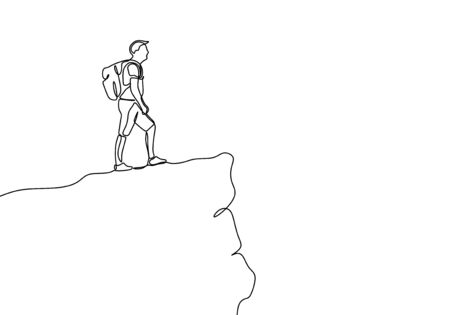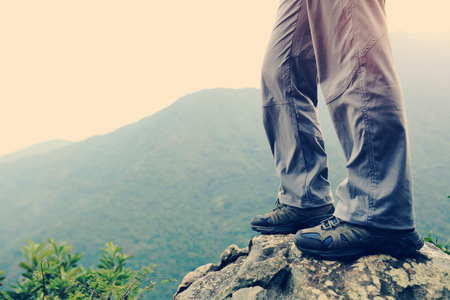1. Why Static Stretching Matters After a Hike
After you’ve wrapped up a long trek on the trail, your legs might feel tight, your back could be sore, and your joints may seem a little stiff. This is where static stretching comes in—a science-backed method that can make a real difference for hikers of all levels. Let’s break down why making time to stretch after hiking isn’t just a good idea, but a key part of taking care of your body so you’re ready for your next adventure.
The Science Behind Static Stretching
Static stretching means holding a stretch for a set period—usually between 15 to 60 seconds—without bouncing or moving. Unlike dynamic stretches (which involve movement), static stretches help lengthen muscles that have been working hard during your hike. According to studies, this type of stretching helps increase muscle flexibility, ease tension, and can even support circulation as your body cools down.
Benefits of Static Stretching for Hikers
| Benefit | How It Helps Post-Hike |
|---|---|
| Speeds Up Muscle Recovery | Helps flush out metabolic waste, reducing soreness and fatigue so you bounce back faster. |
| Reduces Stiffness & Soreness | Eases tightness in muscles and joints, making it easier to move the next day. |
| Supports Long-Term Mobility | Keeps your range of motion healthy, which is key for tackling tough trails over time. |
| Lowers Injury Risk | By keeping muscles flexible, you’re less likely to pull something on future hikes. |
Why Outdoor Enthusiasts Swear By It
If you love spending time outdoors, maintaining mobility and reducing injury risk are crucial for enjoying the wild places you love. Regular static stretching after hiking sessions isn’t just about comfort—it’s an investment in keeping your body strong and ready for whatever trail comes next.
2. Essential Muscle Groups to Target Post-Hike
After a long hike, your muscles have worked hard—especially those that power every uphill climb and steady every downhill step. Focusing your static stretching on key muscle groups can help you bounce back faster and reduce next-day soreness.
Why These Muscles Need Attention
Hiking puts unique demands on your body, especially on your lower half. When you stretch the right areas, you boost blood flow, ease tightness, and help your muscles repair themselves more efficiently. Here are the main muscle groups that deserve some post-hike TLC:
| Muscle Group | Common Hiking Strain | Benefits of Stretching |
|---|---|---|
| Calves | Pushed with each uphill step and while navigating rocky terrain. | Prevents cramps, increases ankle flexibility, and reduces stiffness. |
| Hamstrings | Engaged when climbing and stabilizing on descents. | Eases tightness behind the legs and improves mobility for future hikes. |
| Quads (Front of Thighs) | Bearing weight during descents and when controlling speed going downhill. | Reduces soreness in the front of the thighs and supports knee health. |
| Hips (Hip Flexors & Glutes) | Used for forward motion and keeping balance on uneven trails. | Increases stride comfort and helps relieve tension from carrying a backpack. |
| Lower Back | Carries extra load from backpacks and stabilizes posture throughout the hike. | Relieves pressure from carrying weight and improves overall posture. |
The Takeaway: Focus Where It Counts
If you hit these target zones with some gentle static stretches after your hike, youll notice less stiffness and be ready for your next adventure sooner. Paying attention to these muscle groups is a simple way to treat your body right—so don’t skip your cooldown!

3. Effective Static Stretching Routines for Hikers
Why Static Stretching Matters After a Hike
After hitting the trails, your muscles can feel tight and sore. Static stretching helps relax those hard-working muscles, improves flexibility, and reduces post-hiking aches. Whether you’re new to hiking or an experienced trekker, these stretches are designed with American hikers in mind—easy to do anywhere from a trailhead picnic bench to your living room floor.
Beginner-Friendly Static Stretches
| Stretch Name | Target Area | Step-by-Step Instructions |
|---|---|---|
| Standing Quad Stretch | Front of thigh (quads) |
|
| Couch Calf Stretch | Calves (lower leg) |
|
| Seated Hamstring Stretch | Back of thigh (hamstrings) |
|
Advanced Static Stretches for Experienced Hikers
| Stretch Name | Target Area | Step-by-Step Instructions |
|---|---|---|
| Pigeon Pose (from yoga) | Hips & glutes |
|
| Lying Figure Four Stretch | Glutes & outer hips |
|
| Kneeling Hip Flexor Stretch | Hip flexors & quads |
|
Tips for Safe & Effective Post-Hike Stretching
Pace Yourself:
Aim to hold each stretch for at least 20–30 seconds. Never bounce or force yourself into discomfort—a mild tension is enough!
Breathe Deeply:
Breathe slow and steady to help muscles relax. Avoid holding your breath during stretches.
Tune In to Your Body:
If something feels painful or sharp, ease up immediately. Everyone’s flexibility is different—find what works best for you after each hike!
Your Post-Hiking Recovery Routine Just Got Easier!
Add these static stretches to every hike’s cooldown. Your muscles will thank you, and you’ll be ready to hit America’s beautiful trails again soon!
4. Best Practices for Stretching After a Hike
Where to Stretch: Embracing U.S. Outdoor Culture
After a long hike, it’s common in the U.S. to see hikers stretching at trailheads, campsites, or even back at home. Taking a few minutes to stretch before you jump in your car or settle by the campfire can really help your muscles recover and reduce soreness. Whether you’re on the Pacific Crest Trail or just finished a local hike in the Rockies, making stretching part of your post-hike ritual is a smart move.
When and How Often Should You Stretch?
| Location | Ideal Timing | Recommended Frequency |
|---|---|---|
| Trailhead | Right after finishing your hike | 1 full routine immediately after hiking |
| Campsite | Once you’ve set up camp and cooled down | At least once in the evening, more if needed |
| Home | Within an hour of returning home | Repeat stretches later that day or the next morning if sore |
Key Tips for Effective Post-Hike Stretching:
- Hold each stretch for 20–30 seconds. Don’t bounce—move slowly and breathe deeply.
- Focus on major muscle groups: quads, hamstrings, calves, glutes, hips, and lower back.
- Avoid overstretching. You should feel gentle tension but no pain.
- Stay consistent. Making stretching a habit helps your body adapt and recover better over time.
The Importance of Hydration During Recovery
The dry air in many popular U.S. hiking spots—like Colorado or Arizona—can make dehydration sneak up on you. Drinking water after your hike helps flush out lactic acid and supports muscle recovery. Pair your stretching with sips of water or electrolyte drinks for best results.
Quick Hydration Guide for Hikers:
| Activity Level/Condition | Hydration Recommendation |
|---|---|
| Mild hike (cool weather) | Drink at least 16 oz (about half a liter) post-hike |
| Strenuous hike (hot weather) | Aim for 32 oz (about 1 liter) or more after hiking; add electrolytes if sweating heavily |
| If feeling sore/cramped | Add sports drinks or coconut water for extra minerals |
Your Post-Hike Routine at a Glance:
- Sit down or stand at the trailhead or campsite when you finish hiking.
- Sip water while you stretch your legs, hips, and back.
- If heading home, repeat your favorite stretches before bed to keep muscles loose.
- If camping overnight, do another short stretch session before crawling into your sleeping bag.
- Praise yourself! Consistency is key for building strength and speeding up recovery after every adventure.
5. Common Mistakes and Safety Tips for Post-Hike Stretching
Watch Out for These Common Stretching Mistakes
After a long hike, its tempting to rush through your stretching routine or push yourself too far. However, making mistakes during static stretching can actually slow down your recovery or even lead to injury. Here are some common missteps to avoid:
| Mistake | What Happens | How to Avoid It |
|---|---|---|
| Over-stretching | Puts too much strain on muscles and joints, increasing the risk of strains or tears. | Stretch until you feel mild tension, not pain. Hold each stretch gently. |
| Bouncing (Ballistic Stretching) | Causes small muscle tears and irritation, leading to soreness or injury. | Hold each stretch steadily; don’t bounce or jerk your body. |
| Ignoring Pain Signals | Pain is your body’s way of saying something’s wrong. Ignoring it can worsen injuries. | If you feel sharp or intense pain, stop immediately and adjust your position. |
Safety Tips: Keeping Your Recovery On Track
- Listen to Your Body: Pay attention to how your muscles feel. If something doesn’t feel right, ease up.
- Warm Up First: Even after hiking, take a few moments to cool down with light walking before diving into stretches.
- Breathe Deeply: Steady breathing helps relax your muscles and increases the benefits of stretching.
Incorporate Stretching Into Your Outdoor Routine
Making static stretching a regular part of your outdoor adventures helps keep your muscles flexible and ready for action. Try setting aside 10–15 minutes after every hike for these routines—your legs (and future hikes) will thank you! Plus, consistent stretching supports overall mobility so you can keep enjoying the trails without unnecessary aches or setbacks.


